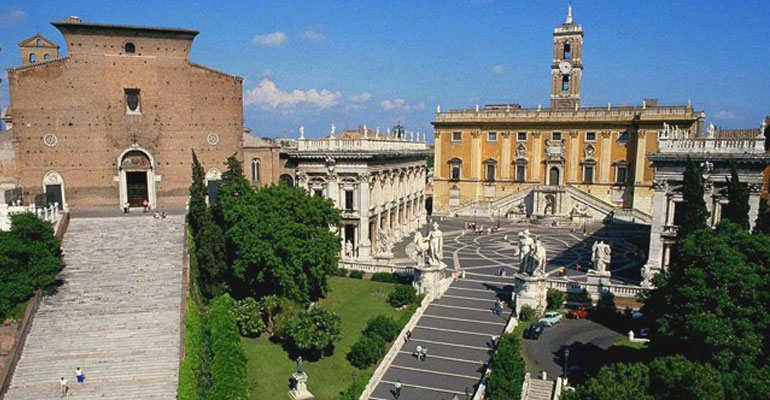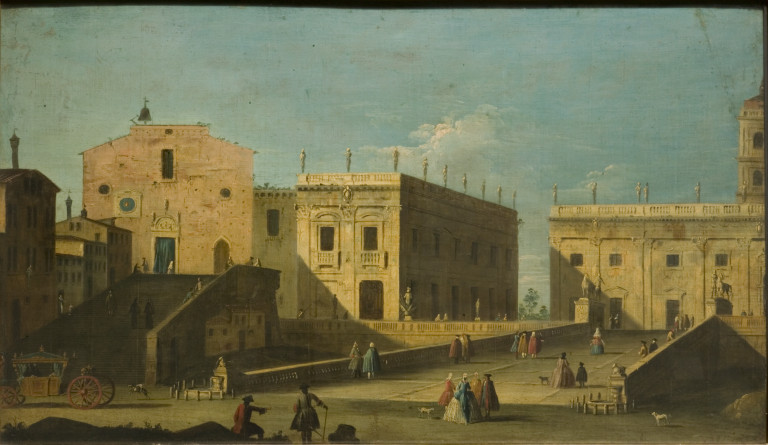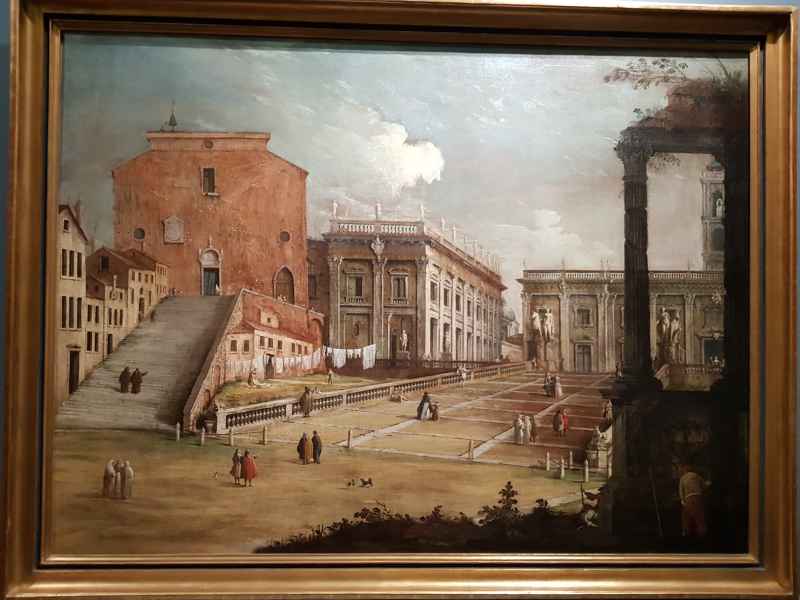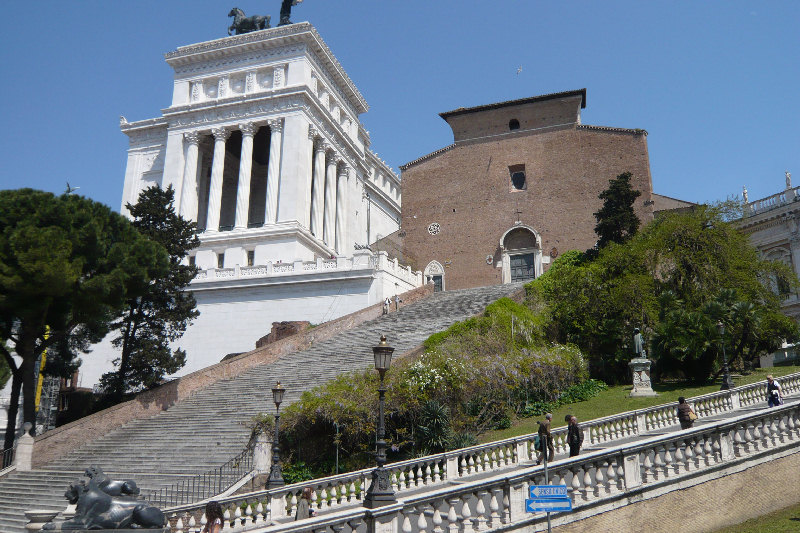


The Basilica of Santa Maria in Ara Coeli is an iconic 13th-century church at the top of a long staircase, known in Rome for its colorful frescoes by Pinturicchio.

The church, whose original name was Santa Maria in Capitolio, was part of the complex of buildings of the monastery that had settled on the Capitoline hill while the rest of the ancient Roman buildings were in ruins.

The church was built on the ruins of the Temple of Juno Moneta, which stood on the Arx, one of the two heights of the Capitoline Hill. However, the identification of the site is not certain; according to other studies the church would in fact rise where the ancient Auguraculum was, the place from which the Auguri took auspices by observing the flight of birds.

The first construction dates back to the 6th century.

As in many other cases, buildings gathered around the first church which in the upper part developed into a monastery, while on the slopes of the hill a market was born and then a small neighborhood.

Remains of these buildings (the small church of San Biagio del Mercato and the underlying "Insula Romana") came to light in the 1930s.

In a 12th century document that confers ownership on the Montem Capitolii to the (Benedictine) abbot of Santa Maria in Capitolio, the three entrances to the hill at the time are described (you can imagine them as little more than steep paths):
- the road that led to the Clivo degli Argentari (the current staircase, which rises from the Mamertine Prison), oriented towards the Suburra;
- the "public road that leads under the Capitol" (roughly corresponding to the current Cordonata);
- the road that leads to San Teodoro, towards the Forum, which still exists.

Details and caption following the plan above.
The Capitoline Hill had re-emerged to public life in 1143, when the Roman people rebelled against Pope Innocent II had designated Giorgio dei Pierleoni as their leader, designating him Patricius, and had chosen that ancient place as a meeting place (around 1195 the construction of the first Palazzo Senatorio).

In the decades of the dispute between the Guelphs and the Ghibellines, the square, although approximate and steep, became the physical place of the municipal experience of the city, and with it its church. It was in this climate that Innocent IV granted the ownership of the site (church and monastery) to the Franciscans, an order of the new times, in 1250.

These restructured the church, giving it the current Roman-Gothic aspect, and it, in addition to being a place of worship, became the center of the political life of Rome, so much so that popular assemblies of the free municipality were held there. The tuning of the renovated church with the new times of the city was concretely manifested also in the modification of its orientation (first towards the Palazzo Senatorio and the Forum, now towards San Pietro and Campo Marzio), and in the construction of the new imposing staircase, commissioned from the free municipality in 1348, as a vow to the Virgin to put an end to the plague that was raging throughout Europe, and made with bare marble obtained from what remained of the staircase of the Temple of Serapis at the Quirinale; the staircase was later inaugurated by Cola di Rienzo.

More than the papal basilica of San Pietro and the cathedral of San Giovanni, dedicated to celebrating the pomp and power of the popes, the Aracoeli was the church of the Roman people and its civic institutions, especially the nearby Senate.

Here in 1341 Francesco Petrarca was a poet; here took place, in 1571, the triumph of the Roman Marcantonio Colonna, deputy commander of the Catholic League against the Turks on the command of Don Juan of Austria, to celebrate the victory in the battle of Lepanto (for the occasion the ceiling was built that we can admire today). Here the Te Deum of thanksgiving of the Roman people takes place every end of the year. In the Aracoeli, moreover, the Christmas precept of the Guards of the Pope's Palace was solemnly celebrated, the urban Militia and the Civic Guard first chosen, then the Palatine Guard of honor.

During the occupation of Rome, in 1797, the French took possession of the hill, driving out the Franciscan friars and reducing the church to a stable: most of the Cosmatesque decorations that embellished it were destroyed. The restorations began as early as 1799, the small temple of S. Elena was rebuilt in 1833 and the new choir organ donated by Prince Carlo Torlonia was inaugurated in 1848.

With the unification of Italy, the ownership of the convent passed to the State, which set up barracks and command of the local police. During the construction of the Vittoriano, begun in 1882 and inaugurated in 1911, the buildings that stood between the southern slope of the Capitoline hill and the entrance to via del Corso were destroyed in several years, including the buildings conventuals connected to the church (in addition to the so-called Tower of Paul III) and the Roman and medieval pre-existences of the site.
Basilica of Santa Maria in Ara Coeli
Address: Scala dell Arce Capitolina, 12, 00186
Phone: 06 6976 3839
Site:
http://www.diocesidiroma.it/Location inserted by
Luigi de Marchi